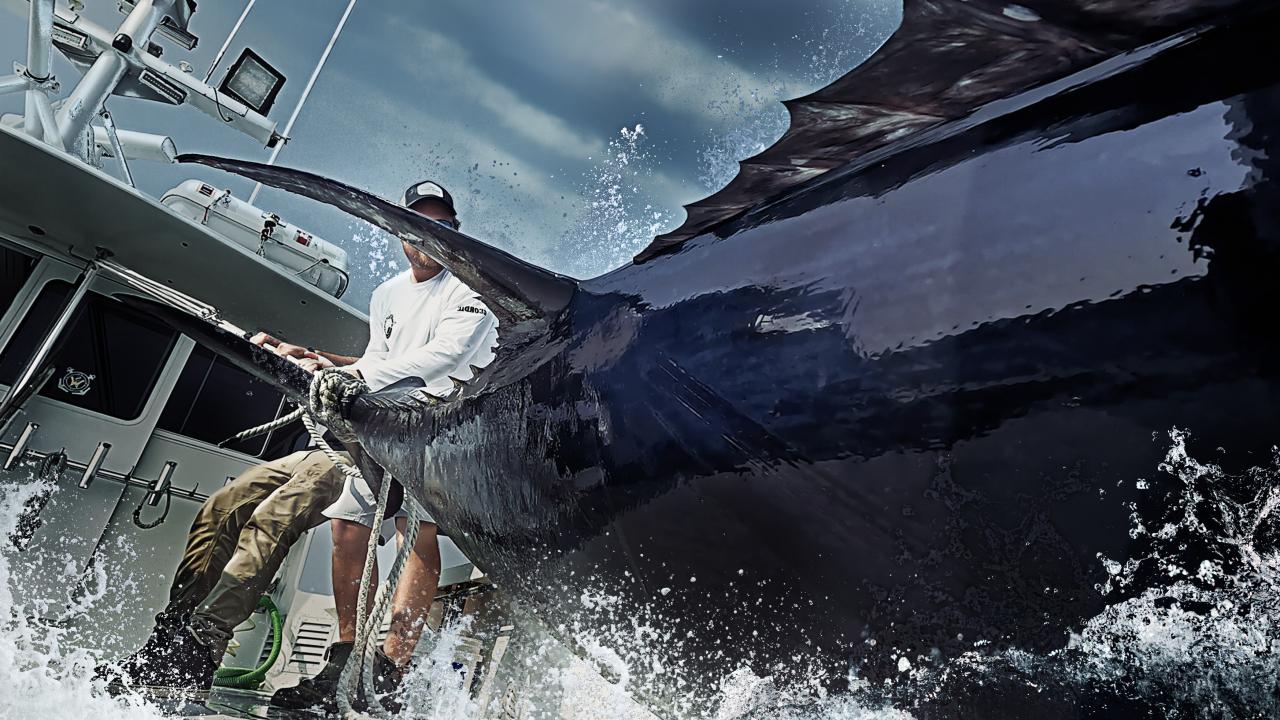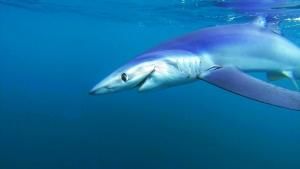- Canada
Americas
Asia & Oceania
Middle East & Africa
Europe
TV SHOWS
VIDEOS
Don't Miss
Most Viewed
Photographer S1
Show: PhotographerLawless Island S7
Show: Lawless IslandWicked Tuna S13 Promo
Show: Wicked TunaPolar Bear Cubs
Show: Wild CanadaShipwreck Treasure
Show: Wicked TunaThe Invaders
Show: Wild Yellowstone: She WolfCritter Fixers: Country Vets S6
Show: Critter Fixers: Country VetsMonkey Hot Tub
Show: Wild Japan: Snow MonkeysTo See God Inside Your Brain
Show: The Story of God with Morgan Freeman
PHOTOS
Photo of the day

WICKED TUNA
- HOME
- ABOUT
- VIDEOS
- PHOTOS
- LOCATION
- INTERACT
- MORE
- Plight of the Bluefin Tuna
- Still Waters: The Global Fish Crisis
- Frequently Asked Questions
- Bluefin Tuna
- Seafood Crisis: Time for a Sea Change
- Wicked Glossary
- Bluefin Tuna 101
- Gloucester: The Fishing Life
- Captain's Q&A
- Rod and Reel: Bluefin Tuna Fishing by the Numbers
- Overfishing
- 10 Things You Can Do to Save the Ocean
- Seafood Substitutions
- Cook Wise Recipes
- Bluefin Tuna Resources
- Bluefin 360
- LEARN ABOUT BLUEFIN TUNA
SEAFOOD SUBSTITUTIONS
Save Depleted Species—And Have Your Seafood, Too
Ocean-Friendly Substitutes
How do you enjoy seafood when many popular species have been overfished and populations are now depleted? By choosing ocean-friendly substitutes that are healthy, sustainable, and just as delicious as your current favorites.
Here, chef and seafood expert Barton Seaver shares sustainable—and flavorful—substitutions for many overfished and depleted species.
Atlantic Bluefin Tuna
Bluefin is the king of the sea. There is really no substitution for this fatty, rich, unique species—hence its great appeal. However, we have eaten our way through this species’ ranks. It is a taste that is lost for many generations to come, maybe forever.
In most preparations, the bluefin can be substituted for by pole-caught yellowfin tuna, which although not quite as elegant, is a great eating experience. For preparations such as grilled tuna, seek out blackfin tuna, albacore, or even the tuna cousin, wahoo.
Atlantic Cod
Atlantic cod has a very similar cousin on the West Coast called Pacific cod,which is nearly an identical stand-in. It has the same flaky yet dense flesh and it cooks with the same distinctive flavor. It also responds well to the wide variety of cooking methods usually written for Atlantic cod. Also try Pacific ling or Alaskan pollack as a substitute.
Atlantic Halibut
This is a no-brainer. Choose Pacific halibut. It is nearly the same eating experience and is often less expensive and easier to find than its Atlantic brethren. The fish come from very sustainable fisheries ranging all along the West Coast. Especially great fish come from the cold waters of Alaska.
Chilean Sea Bass (Patagonian Toothfish)
As a substitute for any preparation, try Alaskan sablefish. Also know as black cod, these fish share the same buttery, rich flesh, which can be cooked using almost any method. Sablefish is available year round and is quite a bit less expensive than Chilean sea bass.
Freshwater Eel
Try Spanish mackerel as a substitute for this dense-fleshed seafood. Both share a deep rich flavor that pairs well with a preparation in which a sweetened sauce is used. Try glazing the mackerel fillet with a traditional hoisin-based sauce or a little lemon juice mixed with honey or maple syrup. For traditional Italian-style dishes, the mackerel braises equally as well as the eel and is great when cooked slowly in white wine as part of a traditional Feast of the Seven Fishes dinner around Christmas.
Grouper
Try wreckfish from the South Carolina banks. It has a similar sweet flavor with a thick flaky fillet. It is great with a traditional blackening spice on the grill and it also takes very well to techniques such as beer-battering and sautéing for tacos. There are also a number of farmed options that work quite well as a replacement. Try barramundi from Australis, a company in western Massachusetts. This fish has a delicate skin and clean sweet flavor very reminiscent of smaller groupers.
Farmed cobia is beginning to make a big splash on the market, and in the next few years I think that we will see a great growth in cobia in the marketplace. Cobia is a near perfect cross between grouper and swordfish. It is a hit on the grill and a very forgiving fish to cook, meaning that it doesn’t dry out quickly.
Orange Roughy
This meaty, white-fleshed fish can be replaced by a number of options. Good quality farm-raised tilapia from the U.S. is a great example. Try brining the tilapia before cooking in order to really develop the flavor of the fish. Slowly roast it with a pat of butter on top and most of your dinner guests might not ever know the difference. Also try wreckfish from South Carolina as a great substitute.
Shark
My favorite recipes for sharklike fish all start with a good marinade in acid, such as lemon juice or sherry vinegar, with a lot of spices. In place of the shark, try farm-raised sturgeon from the U.S. It has the same density and appealing steaklike chew to it. When making soups, sturgeon has the same cartilaginous texture that thickens and enriches broths and chowders. Farm-raised cobia is also somewhat similar in texture to shark and is a great substitute, especially in grilled or roasted preparations.
Shrimp
There are some fantastic shrimp out there that nearly no one knows about.Oregon pink shrimp or Maine pinks are delicious products that are very inexpensive and very convenient. Available all year round as frozen products, these work well in soups, salads, cocktails, sandwiches, and nearly every other preparation you can imagine. They are smaller than warm-water shrimp but are clean and sweet in flavor and a real treat.
There are also some farm-raised shrimp options available from U.S. producers that are great eating. They are only a little more expensive and you can eat well knowing that you are supporting ecofriendly practices and helping to create jobs for Americans.
There are some wild-caught options, as well, such as Fisherman’s Daughter wild Sonora Coast shrimp from CleanFish, which is delicious and a great sustainable story. Also look for fresh wild shrimp from the Gulf States and the Carolinas.
Snapper
Try barramundi from Australis, a company in western Massachusetts. It is a clean-flavored, sweet-flesh fish that is nearly identical to snapper in texture. It is widely available and well priced for the quality of fish that it is. It works equally as well roasted whole as it does cooked as fillets. It's great in ceviches as well.
Sturgeon/Paddlefish (Wild-Caught)
Look for domestically farmed sturgeon, as it is highly sustainable and a delicious product. It is identical in texture and has a cleaner, more esteemed flavor than its wild counterpart. It can be an expensive product, though, due to the long time it takes for them to grow to market size—almost six years.
Yellowtail (Imported)
Try the excellent product from Kona Blue called Kona Kampachi. It is a fantastic eat with a super oily, rich flesh. It is great as a raw dish but equally fantastic as a grilled or roasted dish. It is grown by a very progressive company that is making great strides at creating new sustainable technologies for the aquaculture industry. Good people and great product making a better future for us all.
ADVERTISEMENT
PHOTOS

Bluefin Catch
Join these men and woman in the fishing of one of the smartest fish in the ocean and the hardest...
- All Galleries
VIDEOS
More On Society


![Dorado Octopus arms reaching out.... [Photo of the day - 16 APRIL 2024]](https://assets-natgeotv.fnghub.com/POD/15166.ThumbL.jpg)
![Nile Crocodile swallows prey whole. ... [Photo of the day - 15 APRIL 2024]](https://assets-natgeotv.fnghub.com/POD/15164.ThumbL.jpg)
![Fuzz Townshend working on the car... [Photo of the day - 14 APRIL 2024]](https://assets-natgeotv.fnghub.com/POD/15162.ThumbL.jpg)







